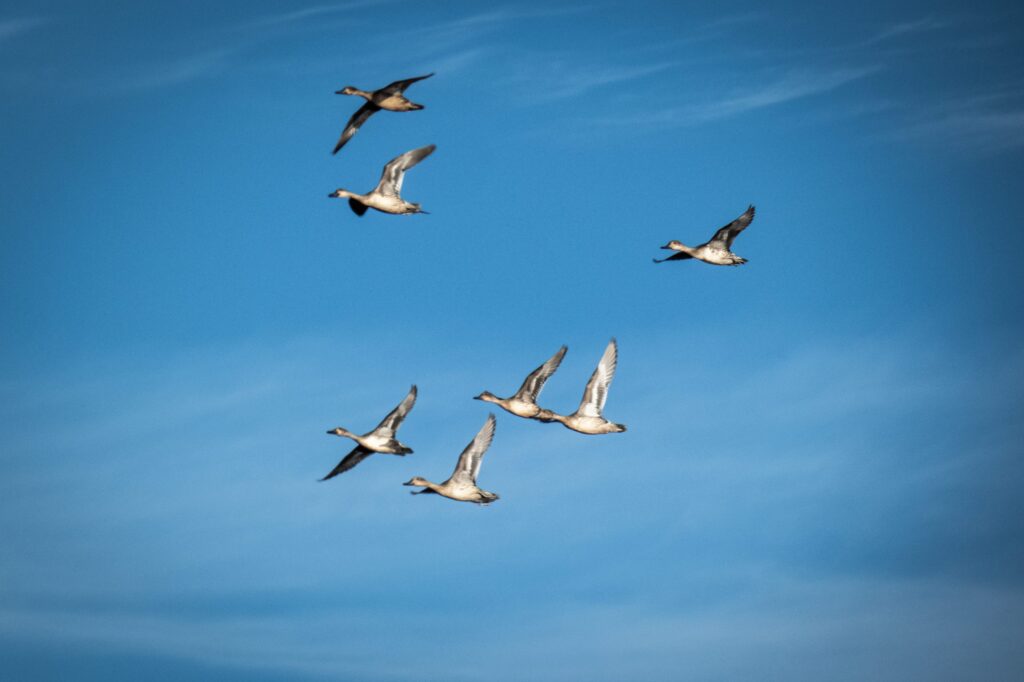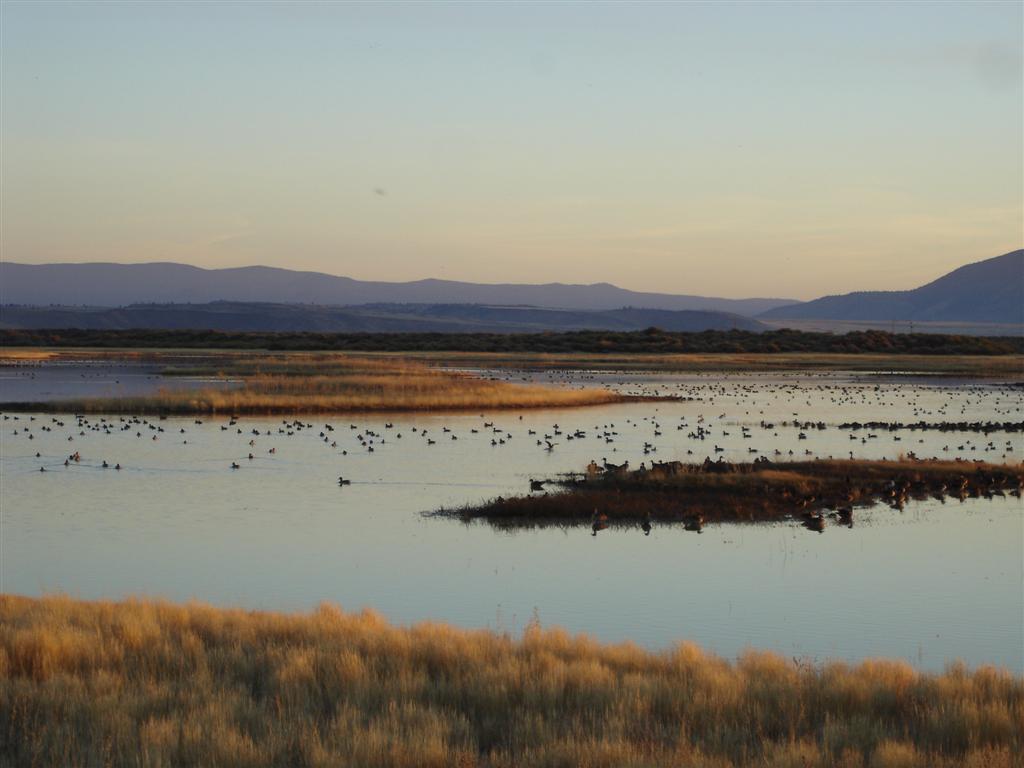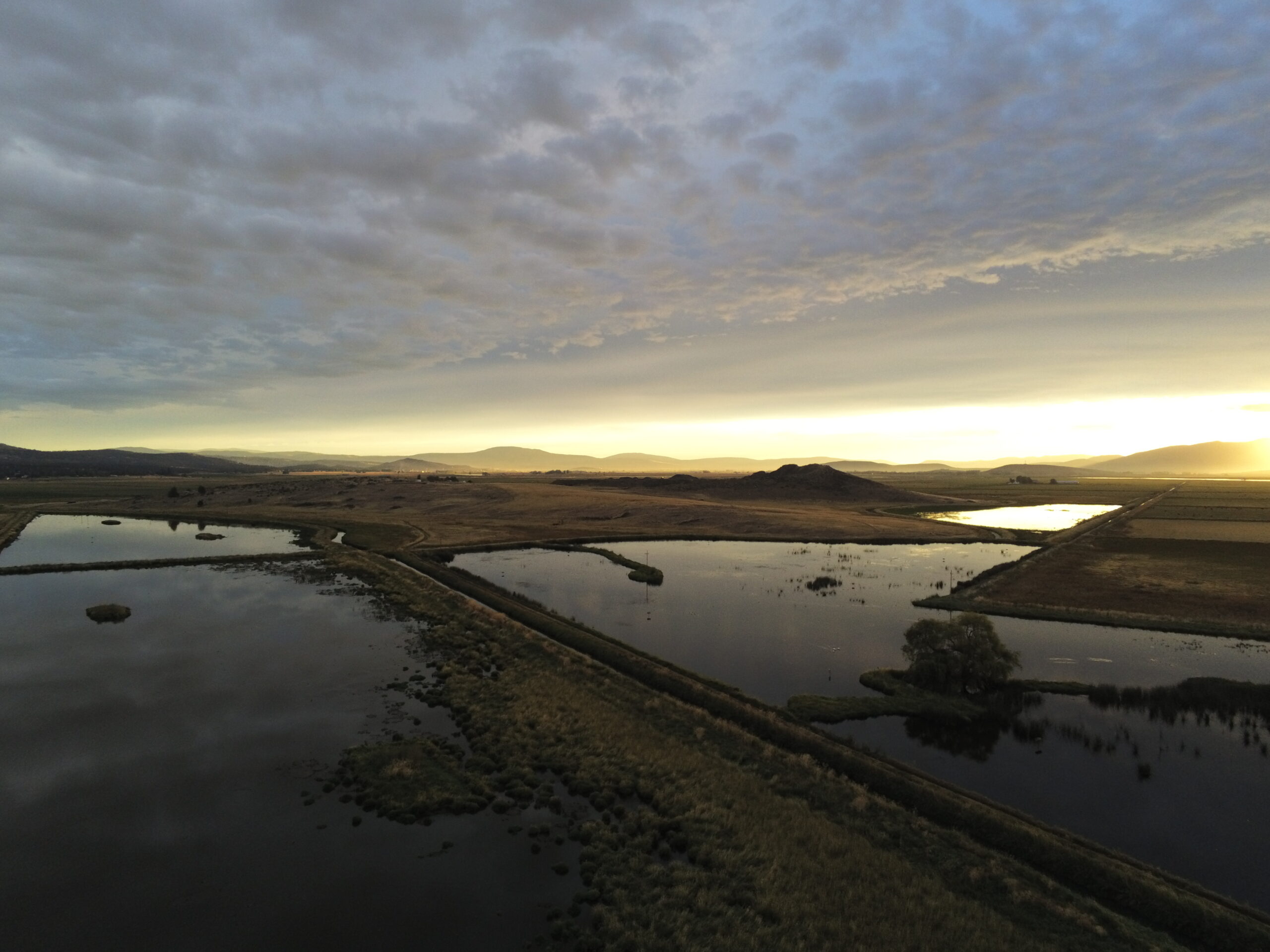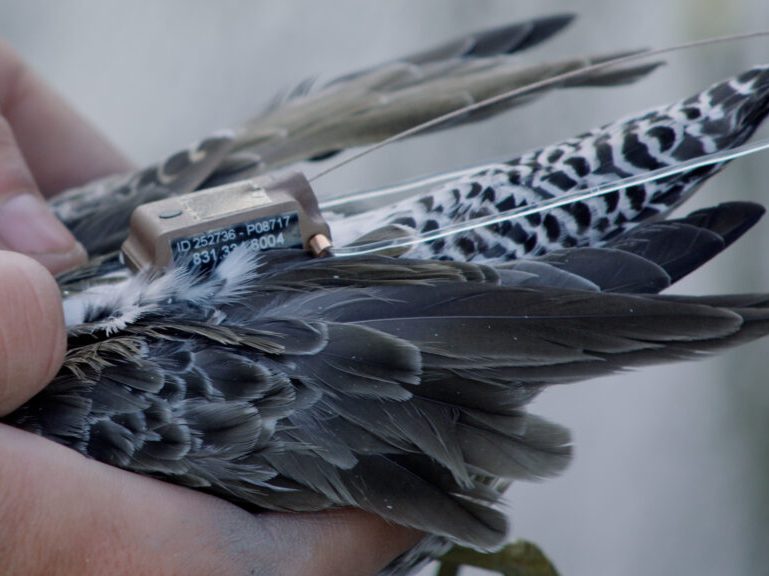The Klamath Basin’s wetlands historically provided an abundance of important year-round habitat for waterfowl and waterbirds. Those same wetlands—and the water that feeds them—also sustain fisheries and people, from farmers and ranchers to the tribes who have called this place home for time immemorial. Wetlands were and remain a vital part of the ecosystem; a key link in the chain that holds the Klamath Basin together.
Since 2021, the Klamath Basin Farming and Wetland Collaborative has been a shining example of the Natural Resources Conservation Service’s Regional Conservation Partnership Program (RCPP) at work. The program provides funding for Klamath Basin farmers to either create wetland habitat on their private land or to flood grain fields seasonally for migratory birds and waterfowl use.
Over 1,000 acres of wetlands have been conserved through this RCPP, and agreements with landowners stretch out to 2029. Ed Contreras, the IWJV’s Southern Oregon Northeastern California Conservation Delivery Coordinator, said these private land acres provide high-quality wetland habitat for migratory birds that helps supplement the Klamath Basin’s public wildlife refuges while providing flexibility for local farmers to keep their lands in production.
“We’re essentially providing a pop-up refuge for ten years while supporting local agriculture.”
Ed Contreras, IWJV SONEC Conservation Delivery Coordinator
Partners in this RCPP include Ducks Unlimited, the U.S. Fish and Wildlife Service Partners for Fish and Wildlife Program, and, of course, the participating landowners.
Learn more about the Regional Conservation Partnership Program

One Minute of Migratory Bird Zen

Klamath Basin Farming and Ranching Coalesce in New RCPP

Series: Telling the Story of the Klamath Basin
beyond the iwjv
In the News
A Win for Farmers and Tribes Brings New Hope
What happens when you turn a barley field into a wetland?
“This Place Wanted to Be a Wetland”
How Karl Wenner turned his fields into a wildlife sanctuary in the Klamath Basin.
One Farm, Many Benefits
A 2021 article looks at how agricultural land can be part of the Klamath Basin water solution.



